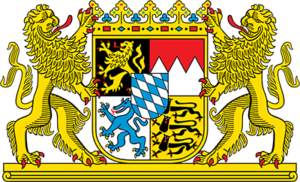Leibniz Institute in Freising identifies new biomarkers for coffee consumption
The potential biomarkers could help determine the health value of coffee even more reliably in the future
December 2022

© Adobe igorkol_ter
cardiogram and heart laid out coffee beans with a cup of coffee
“Food-specific biomarkers are important tools to explore the health effects of food.”
Professor Veronika Somoza, director of the Freising-based Leibniz Institute
In search of new biomarkers for nutrition and health studies, a research team from the Leibniz Institute for Food Systems Biology at the Technical University of Munich (LSB) has identified and structurally characterized three metabolites that could be considered as specific markers for individual coffee consumption. These are degradation products of a group of substances that are formed in large quantities during coffee roasting but are otherwise rarely found in other foods. This and the fact that the potential biomarkers can be detected in very small amounts of urine make them interesting for future human studies.
According to Statista, coffee is by far the most popular hot beverage in Germany. On average, around 168 liters are consumed per person per year. It is not only a stimulant, but also has positive health properties. For example, numerous observational studies indicate that moderate coffee consumption is associated with a reduced risk of type 2 diabetes or liver disease.
Biomarkers instead of self-reporting
However, with regard to the amounts of coffee drunk, such observational studies rely on participants’ self-reports, which are difficult to verify. “Complementary studies would therefore be desirable in which coffee consumption could be objectively verified using biomarkers in order to determine the health value of coffee even more reliably,” says Dr. Roman Lang, who heads the Biosystems Chemistry & Human Metabolism research group at LSB.
Although earlier studies had already pointed to biomarker candidates, research on this had stalled for years. The substances previously detected were metabolic intermediates or breakdown products (metabolites) of various coffee compounds whose urine concentrations correlated strongly with the level of coffee consumption. At the time, however, the researchers had not succeeded in clearly identifying the molecular structure of the metabolites.
Use of high-performance analytical technologies
Therefore, as part of a pilot study, Dr. Roman Lang’s team examined the urine samples of six people after they had consumed 400 ml of coffee three hours earlier. With the help of high-performance analytical technologies and self-produced reference substances, the team succeeded in identifying three candidate biomarkers in the urine and, for the first time, in clearly determining their chemical structure. These are a glucuronic acid conjugate of atractyligenin, whose glycosides are present in relatively high concentrations in coffee beverages, and two glucuronic acid derivatives of an atractyligenin oxidation product.
“Our findings help advance biomarker research,” says Dr. Roman Lang. Dose-response studies, pharmacokinetics and human studies with much larger numbers of subjects must now follow to test the biomarker suitability of the identified compounds, he adds. Professor Veronika Somoza, director of the Freising-based Leibniz Institute adds, “Food-specific biomarkers are important tools to explore the health effects of food. Therefore, part of our scientific work at LSB is also focused on finding biomarkers for food consumption.”
More Information:
Function of glucuronic acid conjugates
In human metabolism, glucuronic acid serves in particular the so-called “detoxification” of nonpolar substances. The latter include, for example, ingested drugs or plant substances, but also endogenous steroid hormones. The body converts the substances to glucuronides in the liver by binding them to glucuronic acid. These glucuronic acid conjugates are much more water-soluble than the original substances and can thus be easily excreted in the urine via the kidneys.
Information about the Institute:
The Leibniz Institute for Food Systems Biology at the Technical University of Munich (LSB) comprises a new, unique research profile at the interface of Food Chemistry & Biology, Chemosensors & Technology, and Bioinformatics & Machine Learning. As this profile has grown far beyond the previous core discipline of classical food chemistry, the institute spearheads the development of a food systems biology. Its aim is to develop new approaches for the sustainable production of sufficient quantities of food whose biologically active effector molecule profiles are geared to health and nutritional needs, but also to the sensory preferences of consumers. To do so, the institute explores the complex networks of sensorically relevant effector molecules along the entire food production chain with a focus on making their effects systemically understandable and predictable in the long term.
The LSB is a member of the Leibniz Association, which connects 97 independent research institutions. Their orientation ranges from the natural sciences, engineering and environmental sciences through economics, spatial and social sciences to the humanities. Leibniz Institutes devote themselves to social, economic and ecological issues. They conduct knowledge-oriented and application-oriented research, also in the overlapping Leibniz research networks, are or maintain scientific infrastructures and offer research-based services. The Leibniz Association focuses on knowledge transfer, especially with the Leibniz Research Museums. It advises and informs politics, science, business and the public. Leibniz institutions maintain close cooperation with universities – among others, in the form of the Leibniz Science Campuses, industry and other partners in Germany and abroad. They are subject to a transparent and independent review process. Due to their national significance, the federal government and the federal states jointly fund the institutes of the Leibniz Association. The Leibniz Institutes employ around 21,000 people, including almost 12,000 scientists. The entire budget of all the institutes is more than two billion euros.
- Lise-Meitner-Straße 34
- 85354 Freising
- ed.mut@bsl-zinbiel.tcatnoc
- www.leibniz-lsb.de



